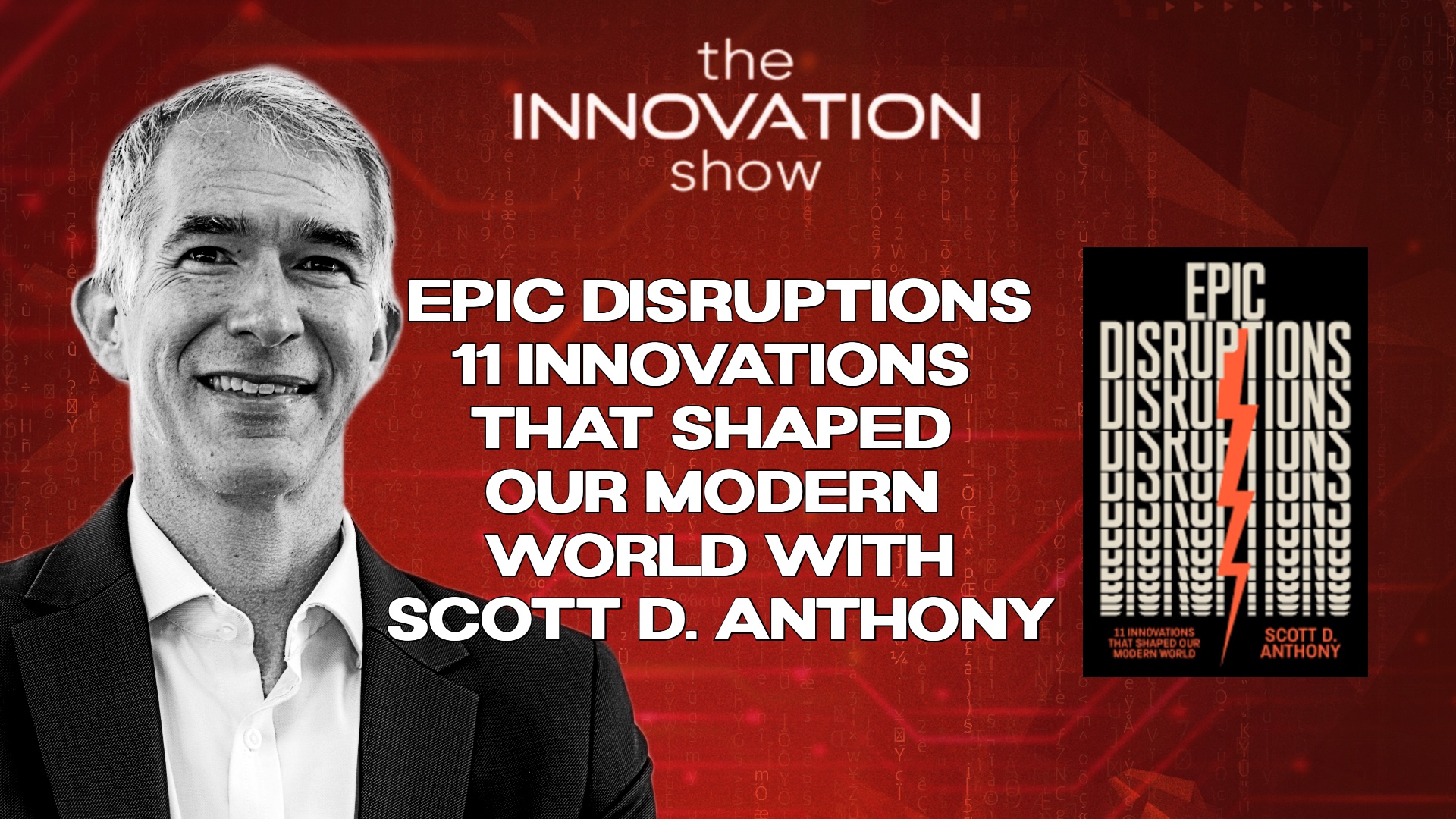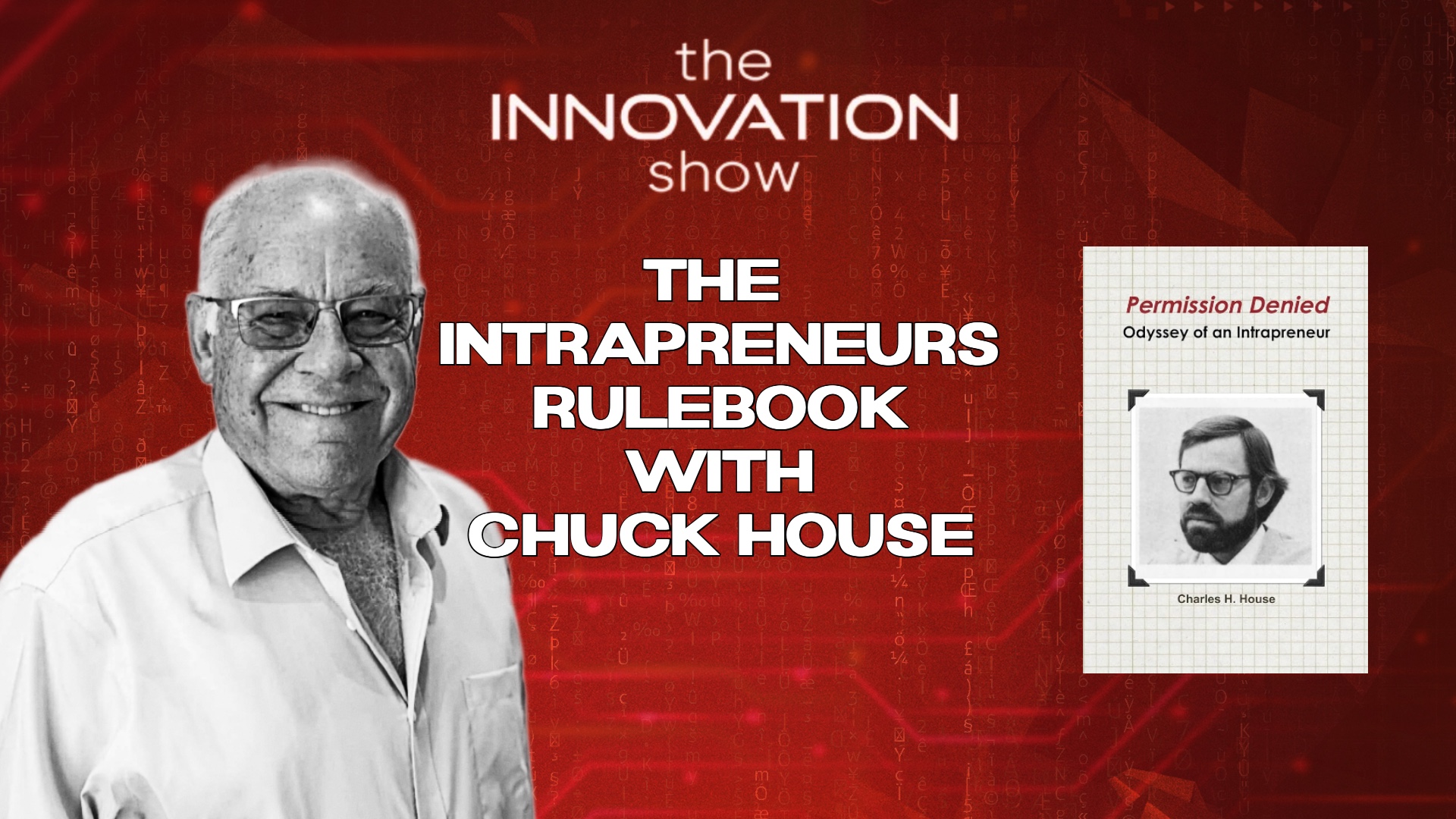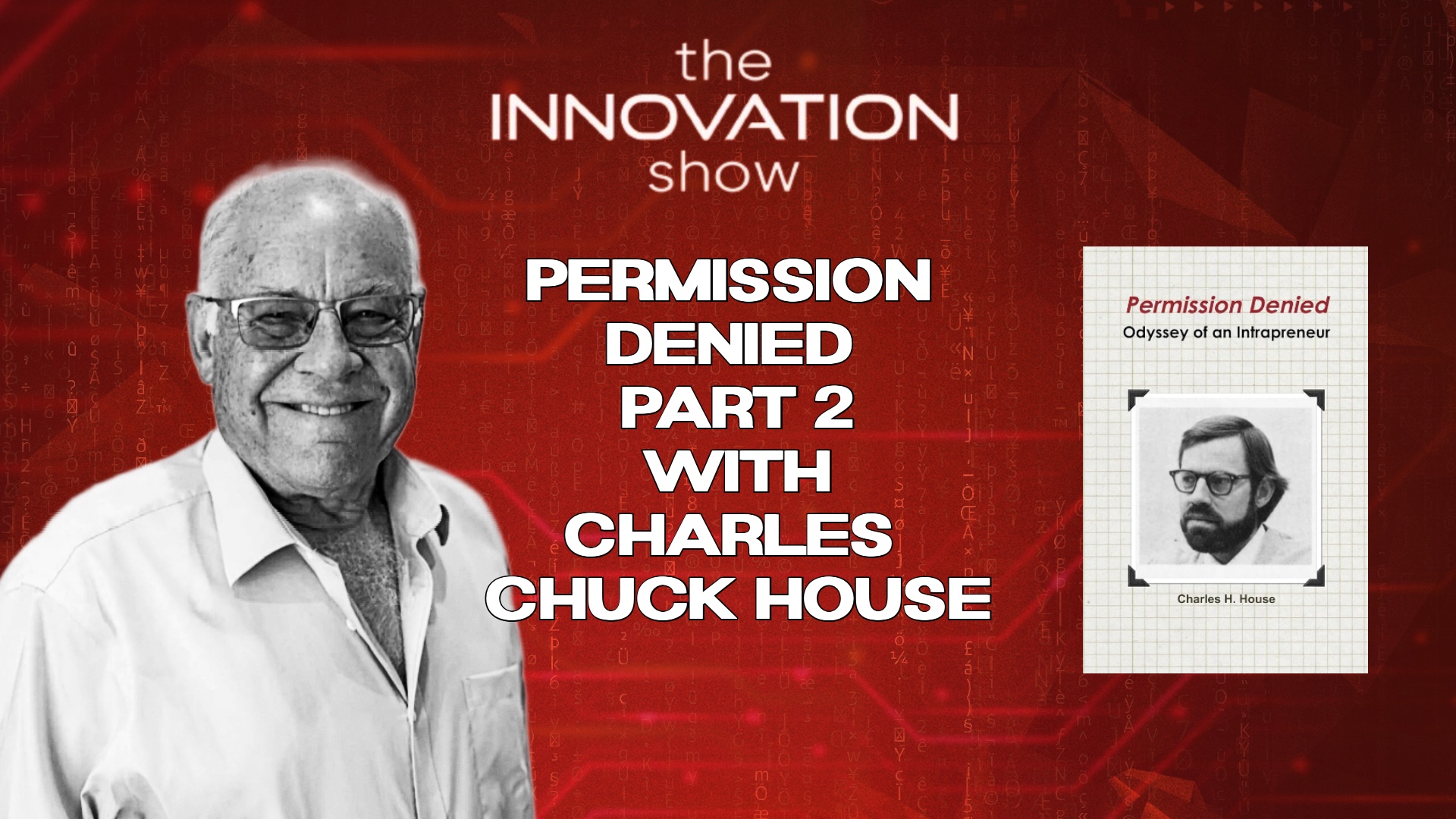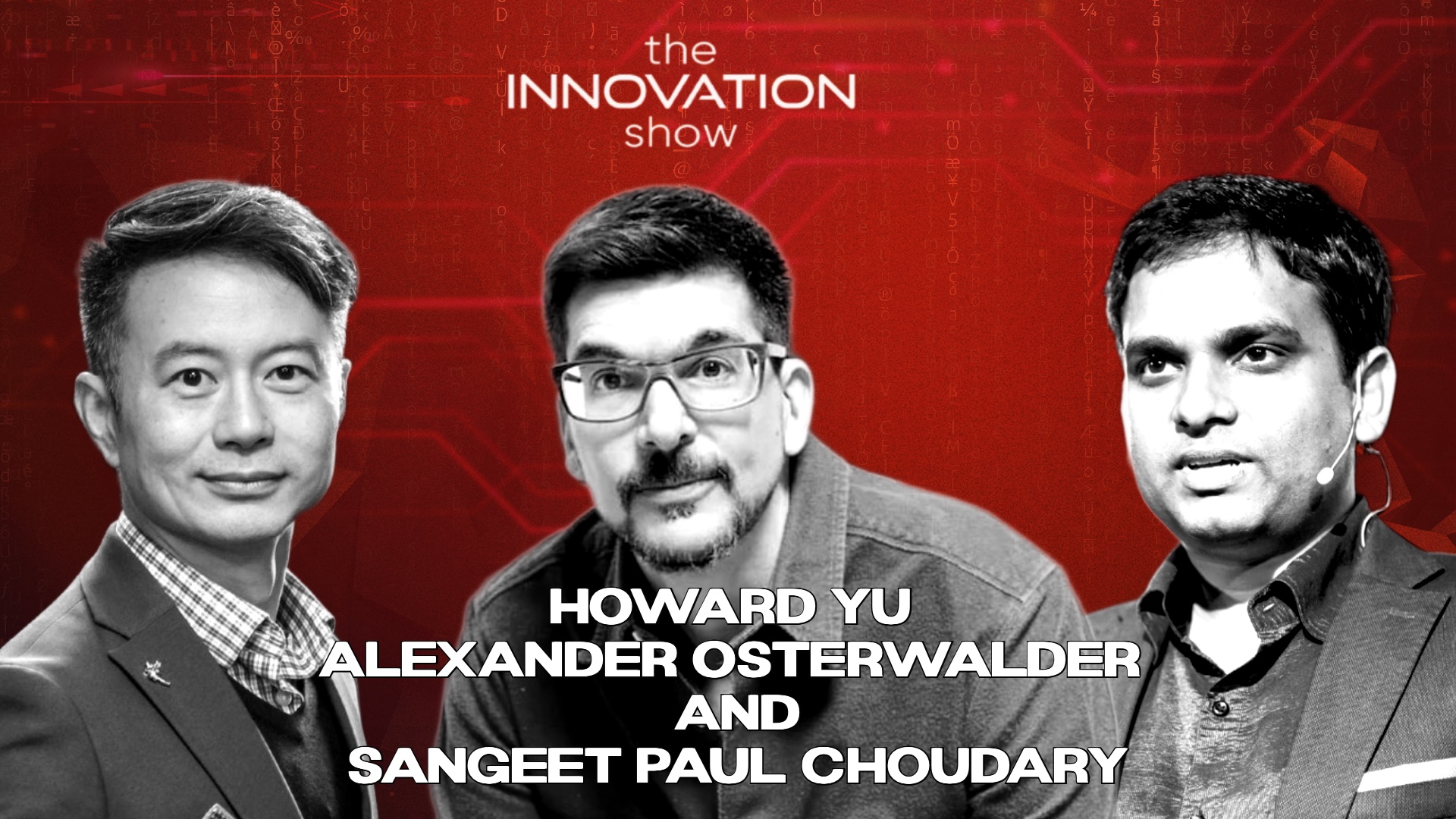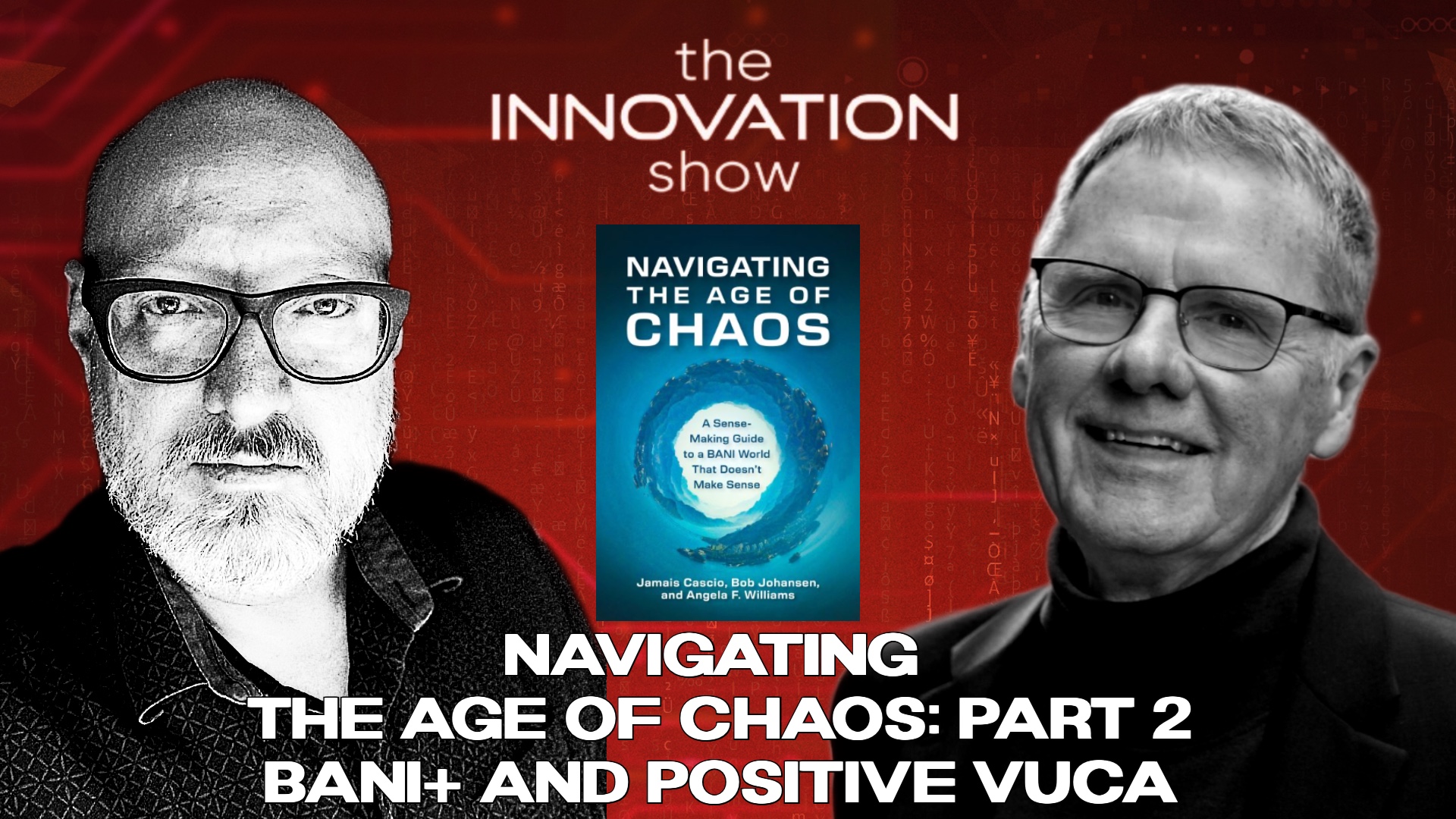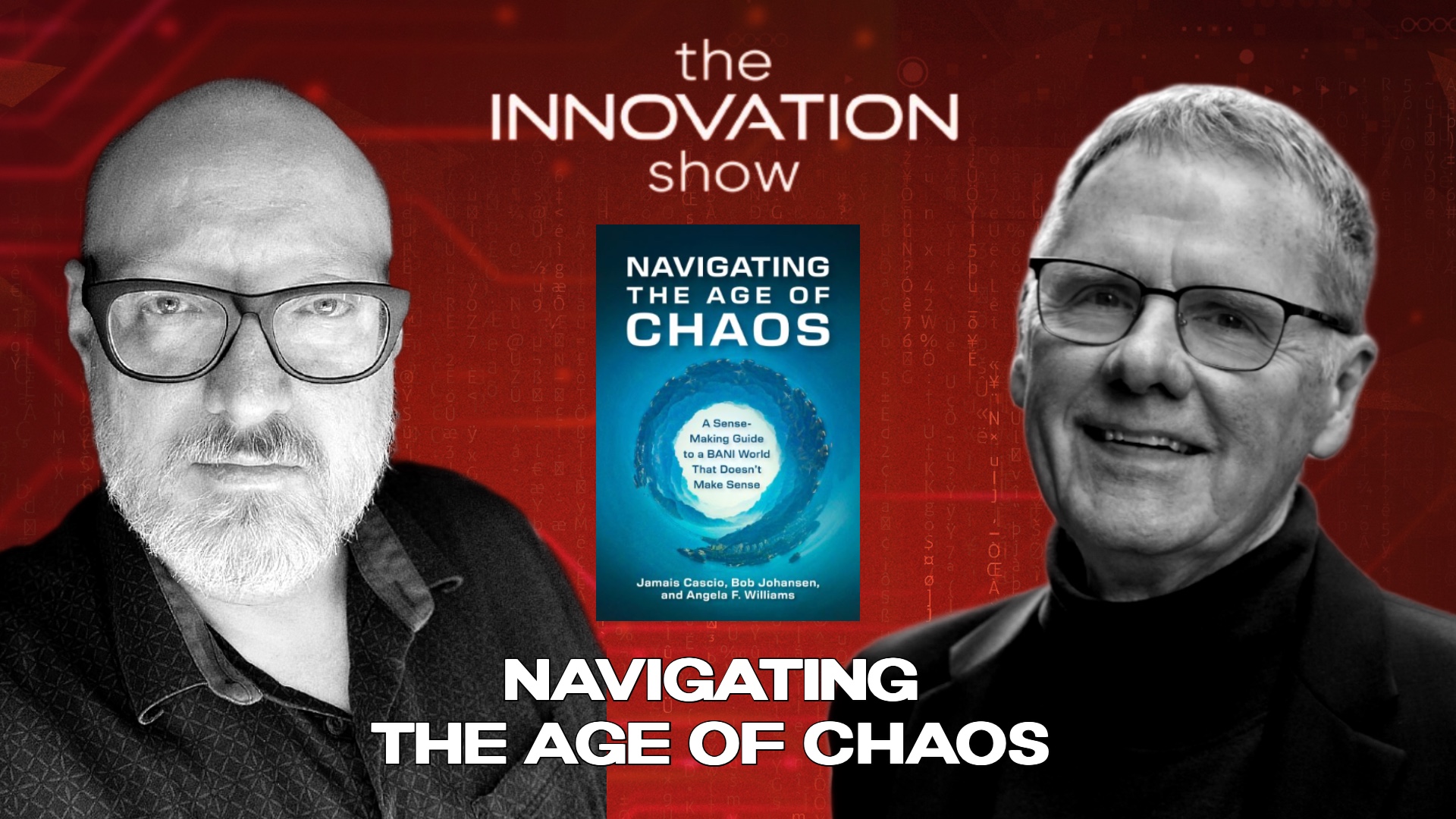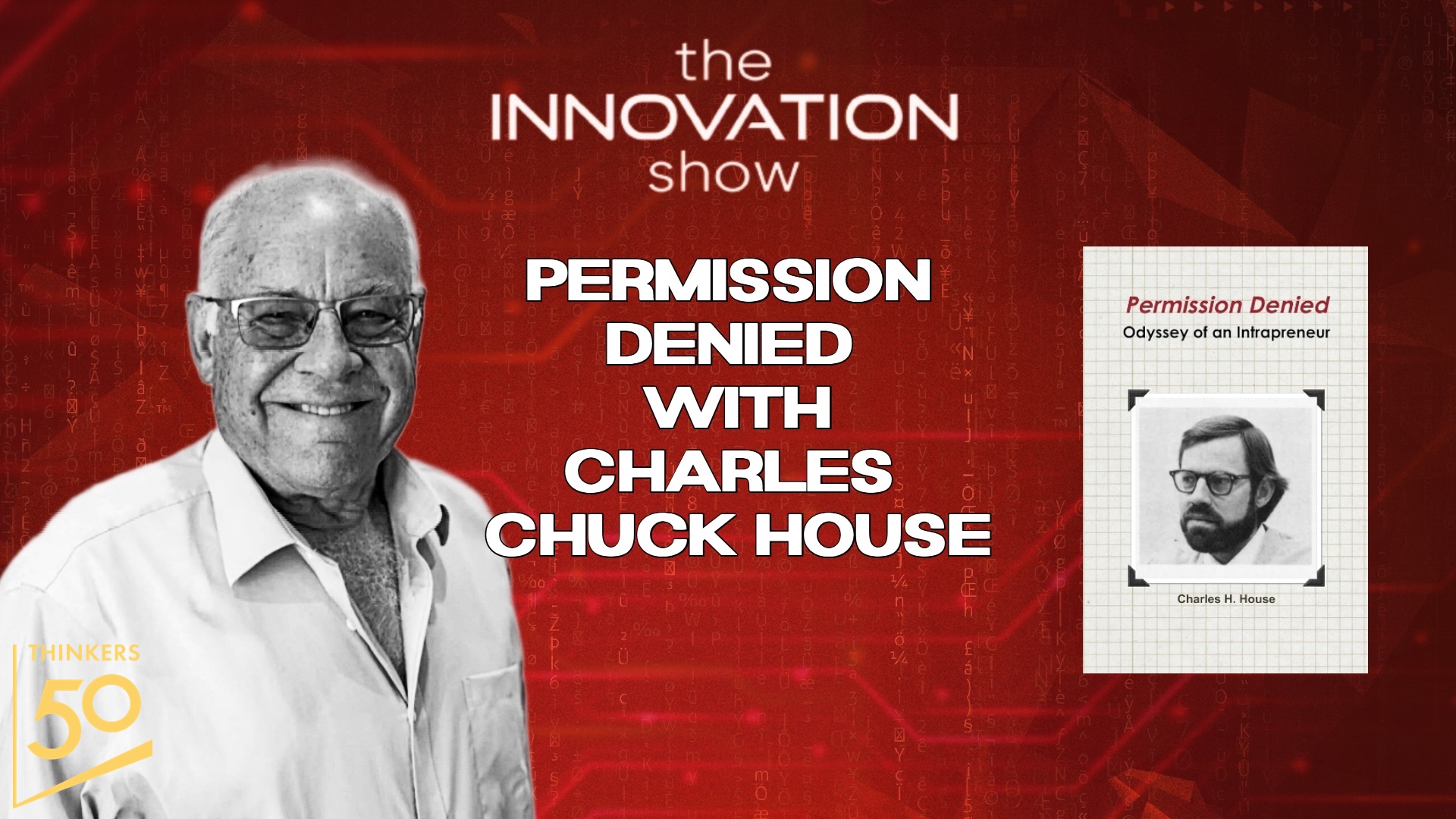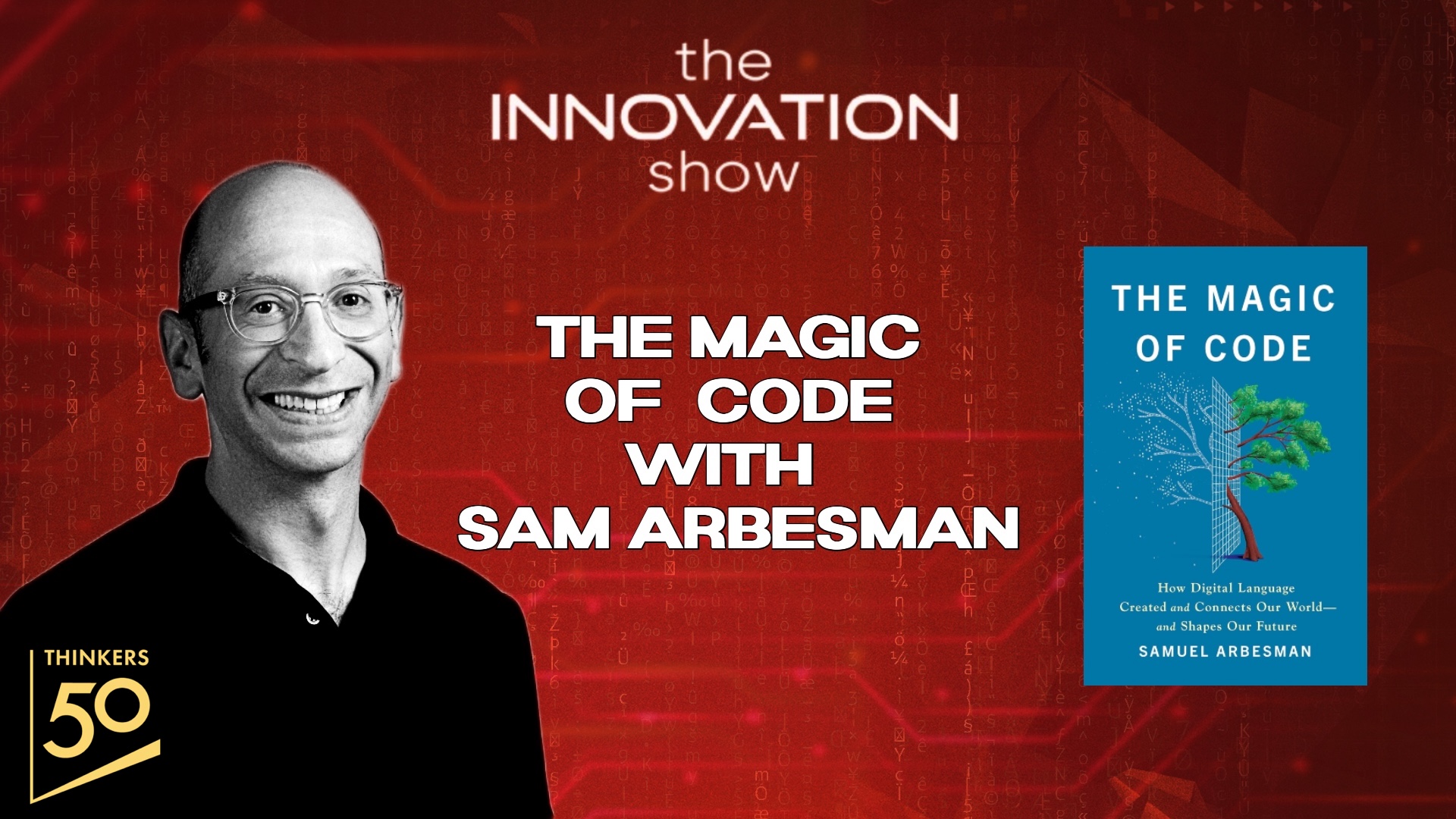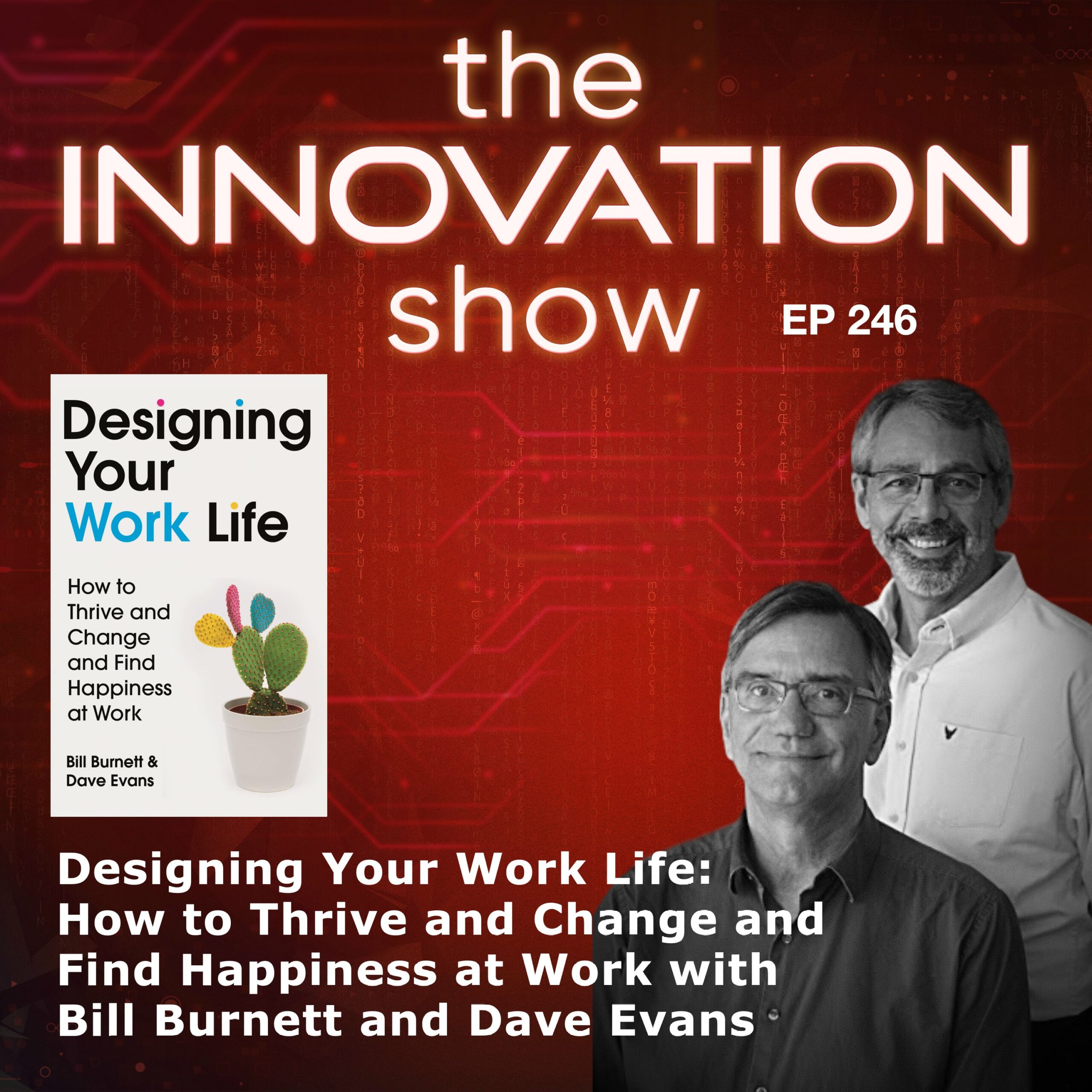In this live episode of The Innovation Show, Harvard Business School’s Teresa Amabile joins Aidan McCullen to explore the emotional, psychological, and structural dimensions of retirement. Drawing on rich research, they unpack the four key tasks for navigating retirement, the role of purpose, and how organizations can better support this critical life transition.
Posted 1 week ago Tagged breakthrough innovations Business Models Business Transformation Clayton Christensen Disruptive Innovation emergent strategy epic disruptions Harvard Business School Innovation Show Innovation Strategy Scott D. Anthony
Scott D. Anthony joins The Innovation Show to explore his latest book Epic Disruptions, tracing 11 game-changing innovations that transformed society—from the printing press to the iPhone. Discover the hidden patterns of disruption, why history keeps repeating itself, and how to prepare your organization for the next wave.
Posted 2 weeks ago Tagged
How do you innovate inside a large organisation without getting shut down? In this episode of The Innovation Show, Chuck House shares the 7 rules of intrapreneurship and hard-won lessons from driving innovation at Hewlett-Packard.
Posted 3 weeks ago Tagged
Chuck House, Permission Denied, Intrapreneurship, Innovation Show, Aidan McCullen, Thinkers50, HP innovation, Corporate innovation, Innovation resistance, Logic analyzer history, Paradigm shift, Reinvention
Posted 4 weeks ago Tagged AI failure rate AI strategy Aidan McCullen Alex Osterwalder Business Model Innovation business model transformation containerisation analogy Digital Transformation enterprise reinvention exploration exploitation GenAI projects Howard Yu industry reshuffling Innovation Culture Innovation Show X Kyndryl leadership vision learning engines modular organisations organisational fluidity Platform Strategy resource allocation Sangeet Paul Choudary sensing to sensemaking strategic foresight Strategy Execution Thinkers50 venture-style innovation
A Thinkers50 special episode with Aidan McCullen, Alex Osterwalder, Howard Yu and Sangeet Paul Choudary exploring how AI reshapes business models, strategy and organisational leadership. A masterclass in reinvention, recorded just hours before each received major Thinkers50 honours.
Posted 1 month ago Tagged Adaptability Ai Ethics AI guardrails Aidan McCullen anticipatory thinking BANI Bob Johansen chaos Complexity empathy ethical technology Flexive Command future scenarios future thinking incomprehensibility Innovation Show interconnectedness Jamais Cascio Leadership Mindfulness neuro flexibility nonlinear systems purpose-driven leadership Resilience robotic empathy sensemaking strategic foresight technological change Vuca
Discover how leaders can navigate complexity using BANI+ and VUCA+ frameworks. Bob Johansen and Jamais Cascio join Aidan McCullen to explore empathy, ethical AI, and future-ready thinking.
Posted 1 month ago Tagged Aidan McCullen Anxiety BANI Framework Bob Johansen brittle systems chaos foresight Future Trends incomprehensibility innovationBANI framework Institute for the Future Jamais Cascio Leadership non-linear systems Resilience sensemaking societal disruption strategic foresight uncertainty Vuca
In this episode, Aidan McCullen dives into the turbulent trends shaping our world with futurists Bob Johansen and Jamais Cascio, co-authors of “Navigating the Age of Chaos.” They explore the BANI framework—Brittle, Anxious, Non-linear, Incomprehensible—and how leaders can respond with resilience, empathy, and strategic foresight.
Posted 2 months ago Tagged
On this episode of The Innovation Show, we welcome Chuck House, serial intrapreneur, author of Permission Denied, and former executive at Hewlett-Packard.
Chuck shares hard-won lessons from inside one of the world’s most influential tech companies—revealing what it really takes to innovate from within. From helping pioneer the first commercial computer graphics display to earning HP’s only-ever Medal of Defiance, Chuck’s story is both a cautionary tale and a masterclass in intrapreneurial resilience.
Hosted by Aidan McCullen, Thinkers50 Award recipient for Innovation and keynote speaker based in Ireland.
🎧 Highlights include:
-
Surviving and thriving as an intrapreneur
-
Navigating organisational resistance
-
Why engineers must meet customers
-
Leadership in uncertain times
-
Insights for today’s innovation leaders
📖 Get Chuck’s book: Permission Denied: Odyssey of an Intrapreneur:
https://amzn.to/3Xq2LxC
🌐 More on Aidan: www.aidanmccullen.com
Posted 2 months ago Tagged AI and Humanity Aidan McCullen Aidan McCullen Podcast Artificial Intelligence Artificial Life Biology and Computing Code and Creativity Coding and Philosophy Digital Language Evolution and AI Future of Technology innovation podcast Philosophy of Technology Sam Arbesman Samuel Arbesman Interview Simulation Hypothesis Technology and Society The Innovation Show The Magic of Code Thinkers50 Thinkers50 Innovation Award
Aidan McCullen and Samuel Arbesman dive into code as a humanistic “superpower,” biology–computation parallels, artificial life, and the simulation hypothesis—tempered by humility and curiosity.
Posted 2 months ago Tagged
In this thought-provoking episode, Aidan McCullen — Thinkers50 Innovation Award Winner, author of Undisruptable, and host of The Innovation Show — welcomes Samuel Arbesman, scientist, author, and polymath, for the grand finale of their trilogy.
Together, they explore The Magic of Code: How Digital Language Created and Connects Our World, diving deep into how code shapes our understanding of reality — from biology and evolution to artificial intelligence and the simulation hypothesis.
Discover how code is the new DNA, the universal language linking art, philosophy, and technology, and why rekindling curiosity, humility, and wonder is essential in our age of machines.
Timestamps
00:00 Introduction and Sponsor Message
00:18 The Power and Mystery of Code
01:33 Guest Introduction: Samuel Arbesman
02:26 The Magic of Code: Themes and Inspirations
03:53 Rekindling Wonder in Computing
11:01 Biology and Computation: A Deep Dive
14:43 Artificial Life and Evolution in Computing
24:17 Emergent Behavior and Evolutionary Contingency
28:28 Simulation Hypothesis: Reality as a Program
29:30 The Complexity of Digital Simulations
30:35 Weather Prediction and Simplified Models
32:00 The Physicality of Computing
33:17 The Simulation Hypothesis
39:05 The Role of Language in AI
44:09 Humanity and Technology
47:39 The Future of Technology and Society
57:00 Final Thoughts on Humility and Curiosity
In This Episode
-
The connection between code, language, and human creativity
-
How biology and computation mirror one another
-
Artificial life, evolution, and digital ecosystems
-
The simulation hypothesis: Are we living in code?
-
The importance of humility, restraint, and curiosity in an AI-driven world
Guest: Samuel Arbesman — Author of The Magic of Code, The Half-Life of Facts, and Overcomplicated
🔗 Find Sam: https://arbesman.net
Host: Aidan McCullen — Thinkers50 Innovation Award Winner, international thought leader on change and reinvention, author of Undisruptable, and host of The Innovation Show, a globally acclaimed and Thinkers50-recognised podcast inspiring leaders to thrive through change.
A former international rugby player, Aidan now helps organisations and leaders adapt and evolve in an age of exponential transformation.
Get Sam’s Book: https://amzn.to/3Xb8abN
Find the Innovation show: https://thethursdaythought.substack.com

